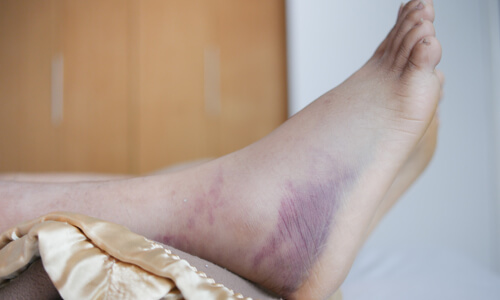EMERGENCY CONTACT: +27 (0) 60 901 7008
Inflammation from a Physiotherapy Perspective
Yad-Marpe
March 28, 2025

Inflammation is a natural defense mechanism of the body, playing a crucial role in the healing process. It is the body’s response to injury, infection, or harmful stimuli, and it can be categorized as acute or chronic. This biological response is essential for eliminating damaged cells, pathogens, and irritants, setting the stage for tissue repair and recovery. However, when the inflammatory response becomes excessive or prolonged, it can lead to further complications, such as chronic pain and restricted movement. From a physiotherapy perspective, understanding inflammation is essential in devising treatment plans that promote healing, reduce pain, and restore mobility. A well-structured physiotherapy approach can help manage the body’s inflammatory response effectively, preventing long-term damage and ensuring a smoother recovery process.
What is Inflammation?
An inflammatory response is the body’s way of protecting itself by removing harmful stimuli and initiating tissue repair.

The inflammatory response is characterized by:
- Redness (due to increased blood flow)
- Swelling (fluid accumulation at the site of injury)
- Pain (stimulation of nerve endings)
- Heat (increased metabolic activity)
- Loss of function (temporary impairment due to swelling and pain)
Types of Inflammation
There are two primary types of:
1. Acute Inflammation
Acute inflammatory response occurs suddenly and lasts for a short duration. It is the body’s immediate response to an injury or infection.
Common causes include:
- Sprains and strains
- Fractures
- Post-surgical healing
- Soft tissue injuries
- Infections

2. Chronic Inflammation
Chronic inflammatory response lasts for an extended period and can contribute to conditions such as arthritis, fibromyalgia, and autoimmune diseases. This prolonged response often leads to tissue damage and long-term pain.

The Role of Physiotherapy in Managing Inflammation
Physiotherapy plays a crucial role in managing inflammatory response, particularly in reducing pain, restoring function, and preventing further complications. Various physiotherapy techniques can help control inflammatory response effectively.
1. Manual Therapy
Manual therapy techniques, such as joint mobilization and soft tissue massage, help improve circulation, reduce swelling, and enhance mobility. Learn more about manual physiotherapy for injuries.

2. Electrotherapy
Electrotherapy, including TENS (Transcutaneous Electrical Nerve Stimulation) and ultrasound therapy, can help reduce inflammatory response and pain. Explore the benefits of electrotherapy in physiotherapy.

3. Hydrotherapy
Water-based exercises can alleviate joint stress and enhance movement. Check out hydrotherapy for rehabilitation.

4. Exercise Therapy
Targeted exercise programs help strengthen muscles, improve joint function, and prevent recurring inflammatory response. Consider a knee exercise program for joint health.

5. Dry Needling
Dry needling is an effective technique for reducing muscle tension and inflammatory response. Read about dry needling in physiotherapy.

Lifestyle Changes to Reduce Chronic Inflammation
In addition to physiotherapy, lifestyle changes can help manage chronic inflammatory responses effectively:
- Anti-inflammatory Diet: Consume foods rich in omega-3 fatty acids, antioxidants, and fiber.
- Regular Exercise: Low-impact activities such as yoga, swimming, and walking help maintain mobility.
- Stress Management: Techniques like meditation and breathing exercises reduce stress-induced inflammatory responses. Learn about stress management programs.
- Adequate Rest: Proper sleep supports immune function and recovery.
Preventing Injuries
Preventing inflammatory response starts with proactive care. Proper warm-ups, good posture, ergonomic support, and avoiding overuse injuries can all contribute to a healthier musculoskeletal system. Explore how ergonomic physiotherapy services can aid in injury prevention.

Conclusion
Understanding inflammatory responses from a physiotherapy perspective is essential for effective treatment and recovery. While it is a natural part of the healing process, excessive or prolonged inflammation can lead to chronic pain and mobility issues. Through targeted physiotherapy interventions such as manual therapy, electrotherapy, hydrotherapy, exercise programs, and dry needling, it is possible to manage inflammatory responses and support long-term musculoskeletal health. Additionally, lifestyle changes—including an anti-inflammatory diet, regular movement, and stress management—play a key role in preventing chronic inflammation.
By taking proactive steps, individuals can reduce the impact of inflammation on their daily lives and enhance overall well-being. Whether recovering from an injury or managing a chronic condition, physiotherapy remains a valuable tool in promoting healing, restoring function, and improving quality of life. If you’re experiencing persistent inflammatory responses, seeking guidance from a physiotherapy professional can help tailor a treatment plan suited to your needs. Explore more about the benefits of physiotherapy and how it can support your recovery journey.

